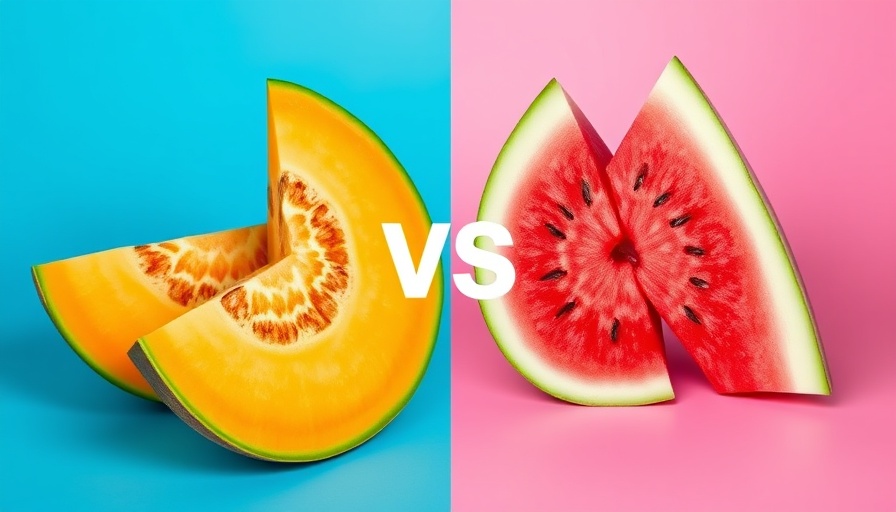
Watermelon vs. Cantaloupe: A Battle of Hydration
When it comes to hydration, both watermelon and cantaloupe stand out as delicious options. Watermelon, with its refreshing taste and 92% water content, is often hailed as the champion of hydration. This high water content not only quenches thirst but also helps maintain moisture levels in the body, making it an ideal summer snack. On the other hand, cantaloupe also brings a considerable water weight of about 89%, providing a satisfying and hydrating experience.
The Nutritional Edge: Which Fruit Wins?
While both fruits are nutrient-rich, their profiles offer unique benefits. Watermelon is known for its high levels of citrulline, an amino acid that may improve blood flow and decrease muscle soreness – perfect for those engaged in fitness activities. Cantaloupe, however, is an excellent source of vitamins A and C, crucial for boosting the immune system and promoting skin health. For healthcare professionals, these distinctions can help guide nutritional recommendations for patients focused on specific health goals.
Gut Health Matters: How Each Fruit Affects Digestion
Cantaloupe takes the lead when it comes to promoting digestive health. The fruit's fiber content supports gut function and keeps the digestive system running smoothly, while watermelon offers some fiber but is primarily celebrated for hydration. Understanding these differences can empower those advising on clean eating and holistic nutrition to make informed choices for themselves and their patients.
More Than Just a Summer Treat
Both watermelon and cantaloupe are low in calories and can easily fit into a balanced nutrition plan or a whole foods diet. These fruits can serve as not only hydration sources but also as tasty, nutrient-dense snacks for busy lifestyles. For healthcare professionals, sharing easy meal prep ideas that incorporate these fruits can help encourage patients to embrace healthier eating habits.
Getting the Most Out of Your Fruits
Simplifying how to integrate these fruits into daily meals can significantly enhance their appeal. Whether you choose to blend watermelon into smoothies or add cantaloupe cubes to salads, these fruits offer flexible options that align with multiple dietary plans, including diabetes-friendly and heart-healthy diets.
For personalized advice on how to include these fruits in your diet or to discuss holistic nutrition strategies, reach out to us at 984-238-6164 or email us at tom@mywellnesstrain.com
 Add Row
Add Row  Add
Add 




Write A Comment